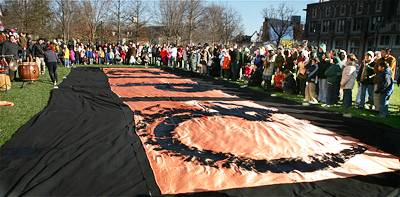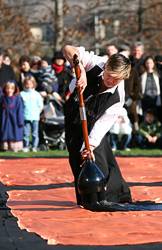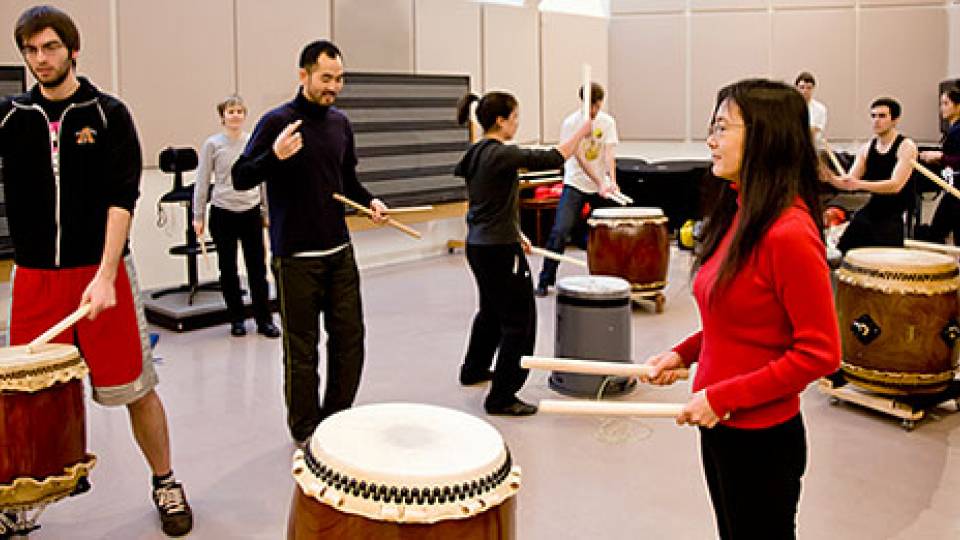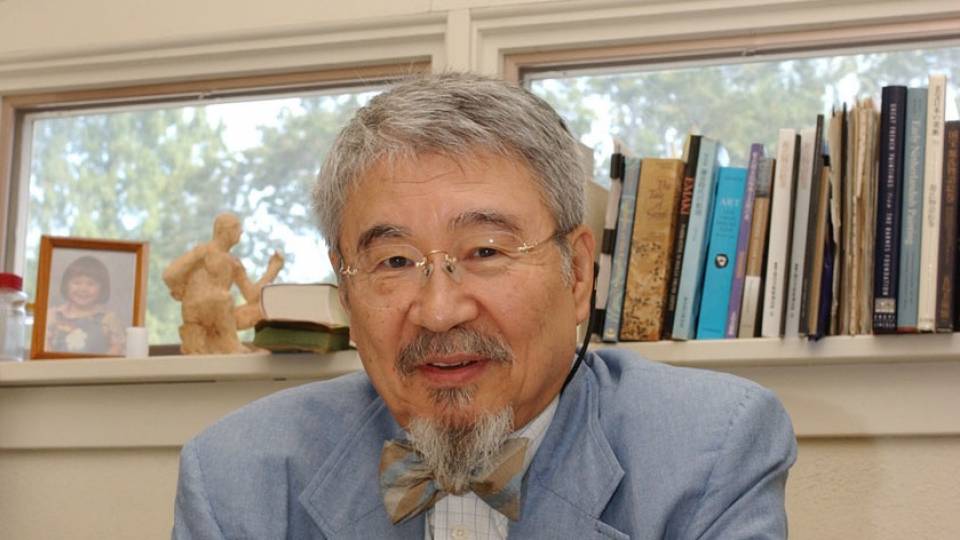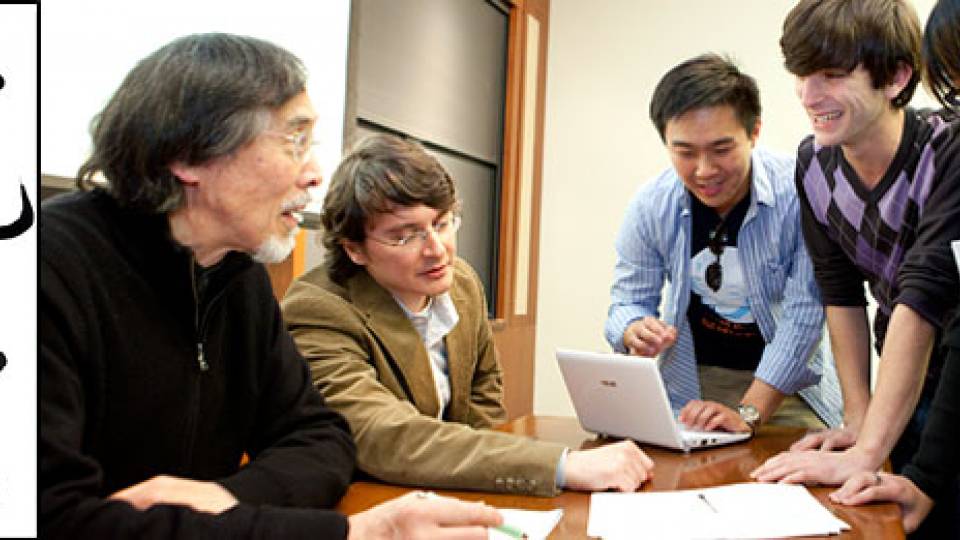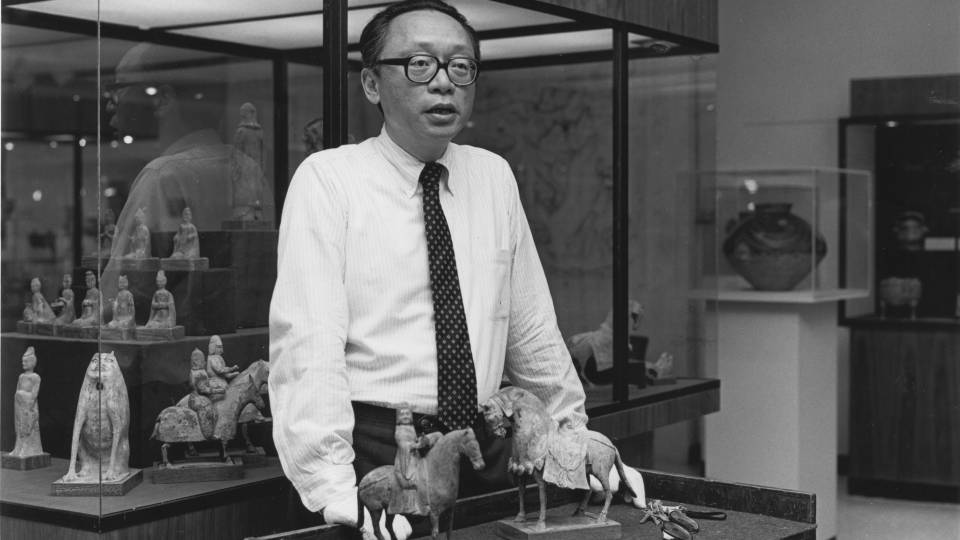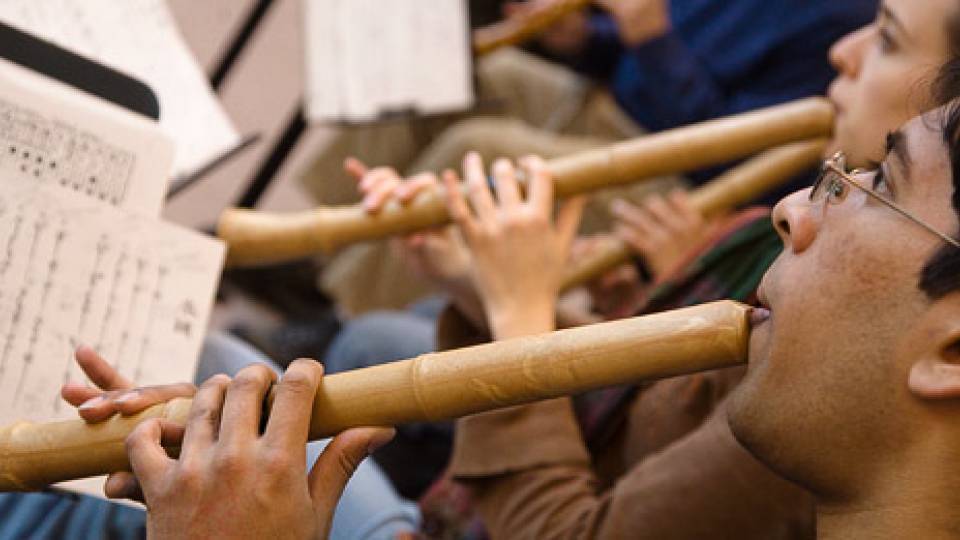Koji Kakinuma, a renowned calligrapher and lecturer in Princeton's Department of East Asian Studies, exhibited the Japanese art of calligraphy known as Shodo in a performance titled "Tygers" on Saturday, Dec. 9, on the south lawn of the Frist Campus Center.
Using paint brushes the size of mops, Kakinuma created a massive banner measuring 65 feet by 20 feet with musical accompaniment provided by Kaoru Watanabe, playing the Japanese flute, or fue, and the traditional large Japanese drum known as the taiko. Watanabe is a former member of KODO, the musical group that performs internationally using the Japanese drums as a visual and musical art form.
Kakinuma created the banner, both to demonstrate his art and to show his appreciation to Princeton for hosting him. In addition to serving as a lecturer for the Department of East Asian Studies this academic year, he held workshops for members of the University community in October and is serving as a visiting research calligrapher through this summer.
"I am passionate about introducing Shodo as a true art form and fundamental part of Japanese culture to Japan and the world at large," he wrote in a statement before coming to Princeton.
Kakinuma, who was born in rural Tochigi Prefecture, Japan, had his first experience with brush work when he was 5 years old. He attended the Tokyo University of Arts and Letters and has exhibited in Japan and New York.
The Department of East Asian Studies intends to make his banner available for campus-wide use at events.
